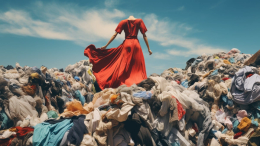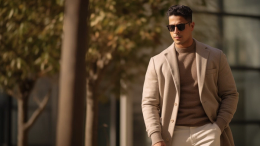7 Frustrations of Shopping Sustainable Fashion (And How to Overcome Them)

By Wildr Editor

It’s not a secret that shopping for sustainable fashion can be both rewarding and frustrating at the same time. While we love a great eco-friendly outfit, there are certain things that still make it hard to shop sustainable. Here are some challenges you might encounter:
Greenwashing
This is the act of making false or misleading claims about the environmental benefits of a product. It's disappointing to see brands market themselves as sustainable, only to find out later that they're not. It's like finding out your Hollywood crush is a total dud in real life. No one likes to be duped.
What you can do: Check for certifications and read reviews from more than one source (We’d avoid fake Amazon reviews). This can be time consuming, but usually if they have a certification from the likes of B Corp, GOTS, etc. then they’re golden. For a deeper understanding of what goes into these certifications, check out our comprehensive guide on sustainable fashion facts.
Lack of transparency
It's important to know where your clothes come from, who made them, and under what conditions. Unfortunately, not all sustainable fashion brands are transparent about their supply chains. We hate feeling like we're being kept in the dark about the origins of our clothing. If it goes on our bodies, we have the right to know.
What you can do: Take 2 minutes to read about their values and policy. If there’s not a word on sustainability efforts, we’d skip the brand. Understanding the consumer perspective in sustainable fashion can help you make more informed choices.
Another great resource is the Good on You directory, which rates clothing brands on their environmental impact, labor practices, and animal welfare policies.
Limited sizes
Many eco fashion brands only offer limited sizes, which can be difficult for those of us who don't fit into the standard "small, medium, large" categories. It's important for sustainable fashion to be inclusive and accessible to all body types. Speaking of inclusivity, explore how men’s eco-friendly fashion is evolving to accommodate diverse needs.
What we can do: Contact your favorite brands and tell them you want to support them but need wider range of sizes! Let them know so they can do something about it. Or let us know, and we’ll be sure your voice gets heard for the brands we offer.
Lack of availability
Knowing where to find better, eco-friendly clothing can be a challenge when they're not available in your local stores.
What we can do: Most brands are small, offer limited batches, and are exclusively online. While we advocate for brands making limited editions rather than overproducing (ahem fast fashion), supply will eventually meet demand as sustainability becomes a focus for the future of fashion. Let’s try to be patient!
Confusing terminology
Terms like "organic," "fair trade," and "recycled" are thrown around but what do they really mean? And do we need a degree in sustainability just to understand what we're buying?
What we can do: As consumers, staying educated is the best thing we can do — Yay free resources! The Sustainable Fashion Glossary is an excellent resource by the non-profit organization Fashion Revolution that includes definitions of common terms and concepts in sustainable fashion.
Limited options for men
While sustainable fashion has made strides in women's clothing, there are limited options for men because it’s still seen as a "women's issue" when it's something that affects us all.
What we can do: Fashion has always targeted women consumers, but the Wildr marketplace hopes to change this by including as many brands made for men, children, and everyone in between. As long as they exist, we’ll do our best to include them.
Lack of awareness
Finally, one of the biggest challenges of sustainable fashion is the lack of awareness among the general public. Most people continue to support fast fashion without realizing the impact it has on the environment and on the workers who make the clothing.
What we can do: One resource you can use to select your fashion brands is The Ethical Fashion Guide which ranks brands on their labor rights and provides information on child labor, forced labor, and environmental management. Caring about our planet and our neighbors means you go the extra mile to stay updated with the industry. You’re already one step ahead by reading this article!
Now go spread the word
Talk to your family & friends. Shout it out from your rooftops (or just share on social media). Here at Wildr, we remain hopeful that slow fashion will continue to grow and evolve. We’re doing our best to support eco-friendly brands by doing the research to help you make conscious choices as consumers.
The next time you're feeling frustrated with sustainable fashion, remember that every small step counts. And if all else fails, just channel your inner Marie Kondo and ask yourself, "Does this spark joy?"



